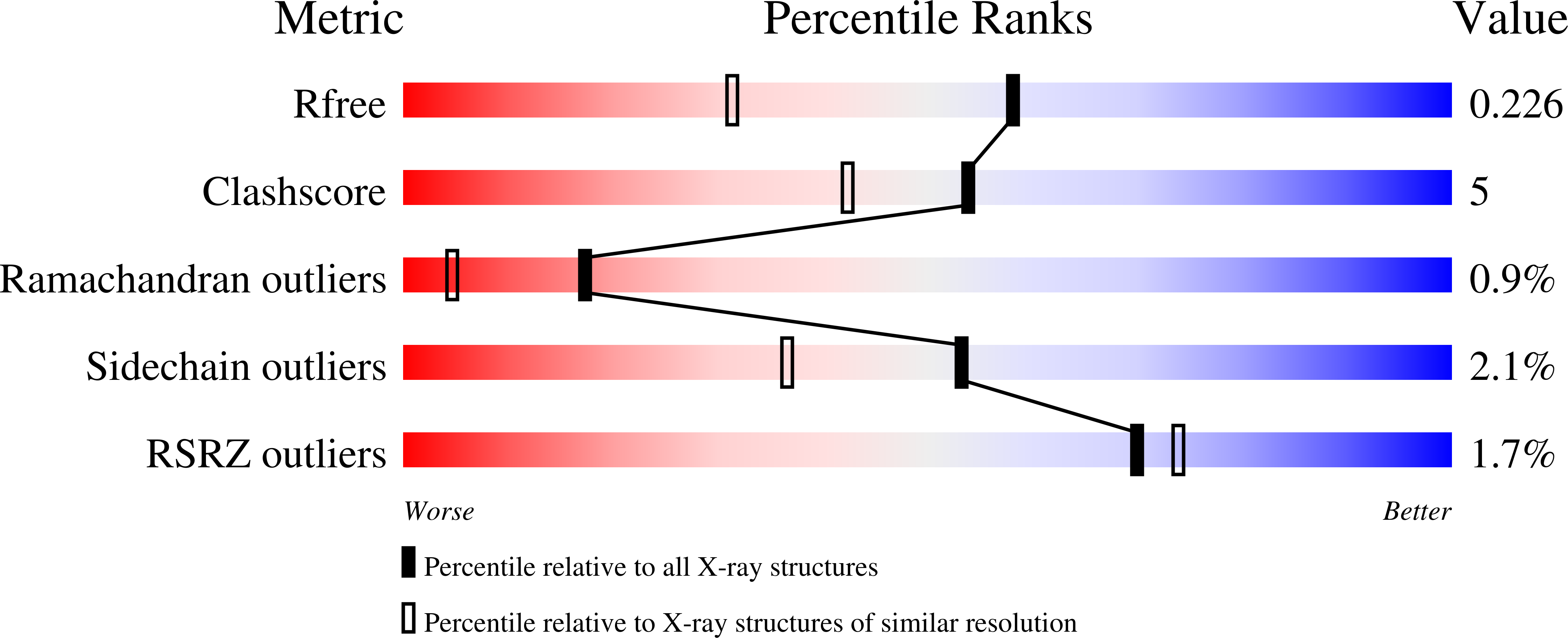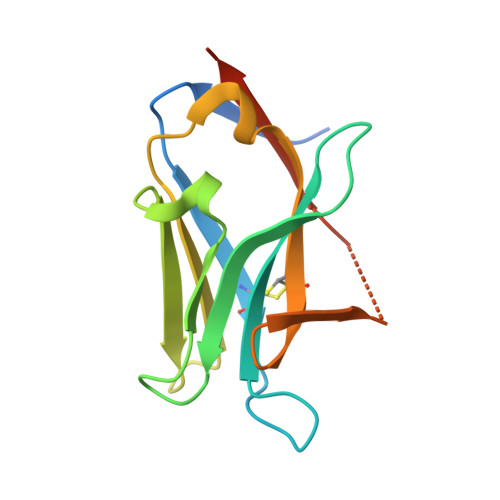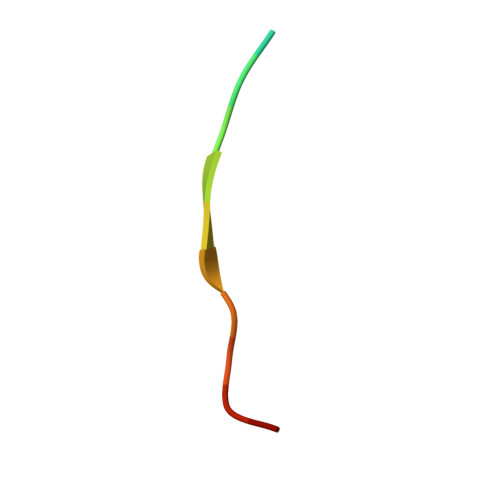Inhibition of Tau seeding by targeting Tau nucleation core within neurons with a single domain antibody fragment.
Danis, C., Dupre, E., Zejneli, O., Caillierez, R., Arrial, A., Begard, S., Mortelecque, J., Eddarkaoui, S., Loyens, A., Cantrelle, F.X., Hanoulle, X., Rain, J.C., Colin, M., Buee, L., Landrieu, I.(2022) Mol Ther 30: 1484-1499
- PubMed: 35007758
- DOI: https://doi.org/10.1016/j.ymthe.2022.01.009
- Primary Citation of Related Structures:
7QCQ - PubMed Abstract:
Tau proteins aggregate into filaments in brain cells in Alzheimer's disease and related disorders referred to as tauopathies. Here, we used fragments of camelid heavy-chain-only antibodies (VHHs or single domain antibody fragments) targeting Tau as immuno-modulators of its pathologic seeding. A VHH issued from the screen against Tau of a synthetic phage-display library of humanized VHHs was selected for its capacity to bind Tau microtubule-binding domain, composing the core of Tau fibrils. This parent VHH was optimized to improve its biochemical properties and to act in the intra-cellular compartment, resulting in VHH Z70. VHH Z70 precisely binds the PHF6 sequence, known for its nucleation capacity, as shown by the crystal structure of the complex. VHH Z70 was more efficient than the parent VHH to inhibit in vitro Tau aggregation in heparin-induced assays. Expression of VHH Z70 in a cellular model of Tau seeding also decreased the aggregation-reporting fluorescence signal. Finally, intra-cellular expression of VHH Z70 in the brain of an established tauopathy mouse seeding model demonstrated its capacity to mitigate accumulation of pathological Tau. VHH Z70, by targeting Tau inside brain neurons, where most of the pathological Tau resides, provides an immunological tool to target the intra-cellular compartment in tauopathies.
Organizational Affiliation:
CNRS, EMR9002 BSI Integrative Structural Biology, 59000 Lille, France; Univ. Lille, Inserm, CHU Lille, Institut Pasteur de Lille, U1167 - RID-AGE - Risk Factors and Molecular Determinants of Aging-Related Diseases, 59000 Lille, France; Univ. Lille, Inserm, CHU Lille, U1172 - LilNCog - Lille Neuroscience & Cognition, F-59000 Lille, France.
















